Fatih on:
[Wikipedia]
[Google]
[Amazon]
Fatih () is a 
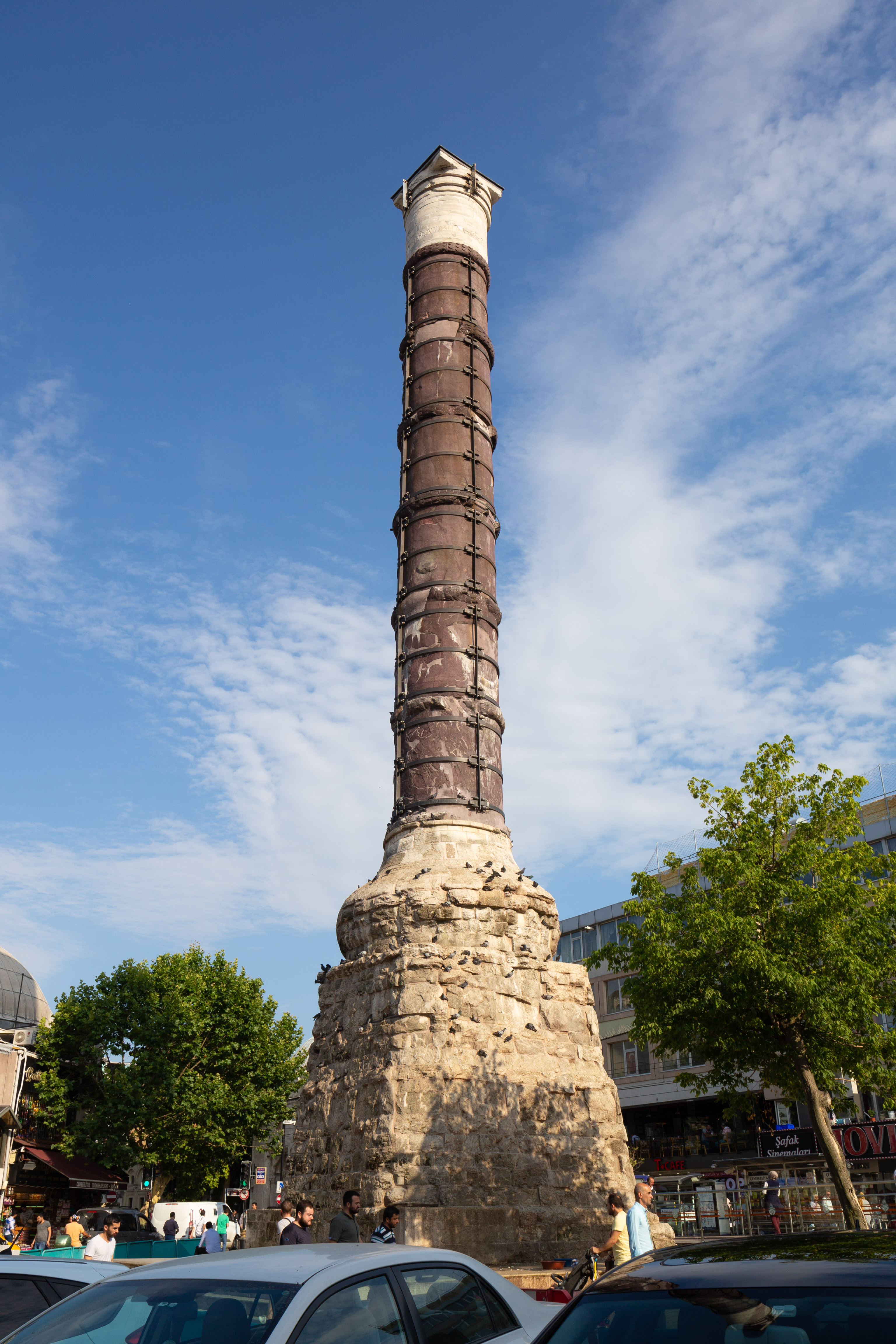 Historic Byzantine districts encompassed by present-day Fatih include: ''Exokiónion'', ''Aurelianae'', ''Xerólophos'', '' ta Eleuthérou'', ''Helenianae'', ''ta Dalmatoú'', ''Sígma'', '' Psamátheia'', ''ta Katakalón'', ''Paradeísion'', ''ta Olympíou'', ''ta Kýrou'', ''Peghé'', ''Rhéghion'', ''ta Elebíchou'', ''Leomákellon'', ''ta Dexiokrátous'', ''Petríon'' or ''Pétra'', '' Phanàrion'', ''Exi Mármara'' ( Altımermer), ''Philopátion'', ''Deúteron'' and '' Vlachernaí''.
Historic Byzantine districts encompassed by present-day Fatih include: ''Exokiónion'', ''Aurelianae'', ''Xerólophos'', '' ta Eleuthérou'', ''Helenianae'', ''ta Dalmatoú'', ''Sígma'', '' Psamátheia'', ''ta Katakalón'', ''Paradeísion'', ''ta Olympíou'', ''ta Kýrou'', ''Peghé'', ''Rhéghion'', ''ta Elebíchou'', ''Leomákellon'', ''ta Dexiokrátous'', ''Petríon'' or ''Pétra'', '' Phanàrion'', ''Exi Mármara'' ( Altımermer), ''Philopátion'', ''Deúteron'' and '' Vlachernaí''.
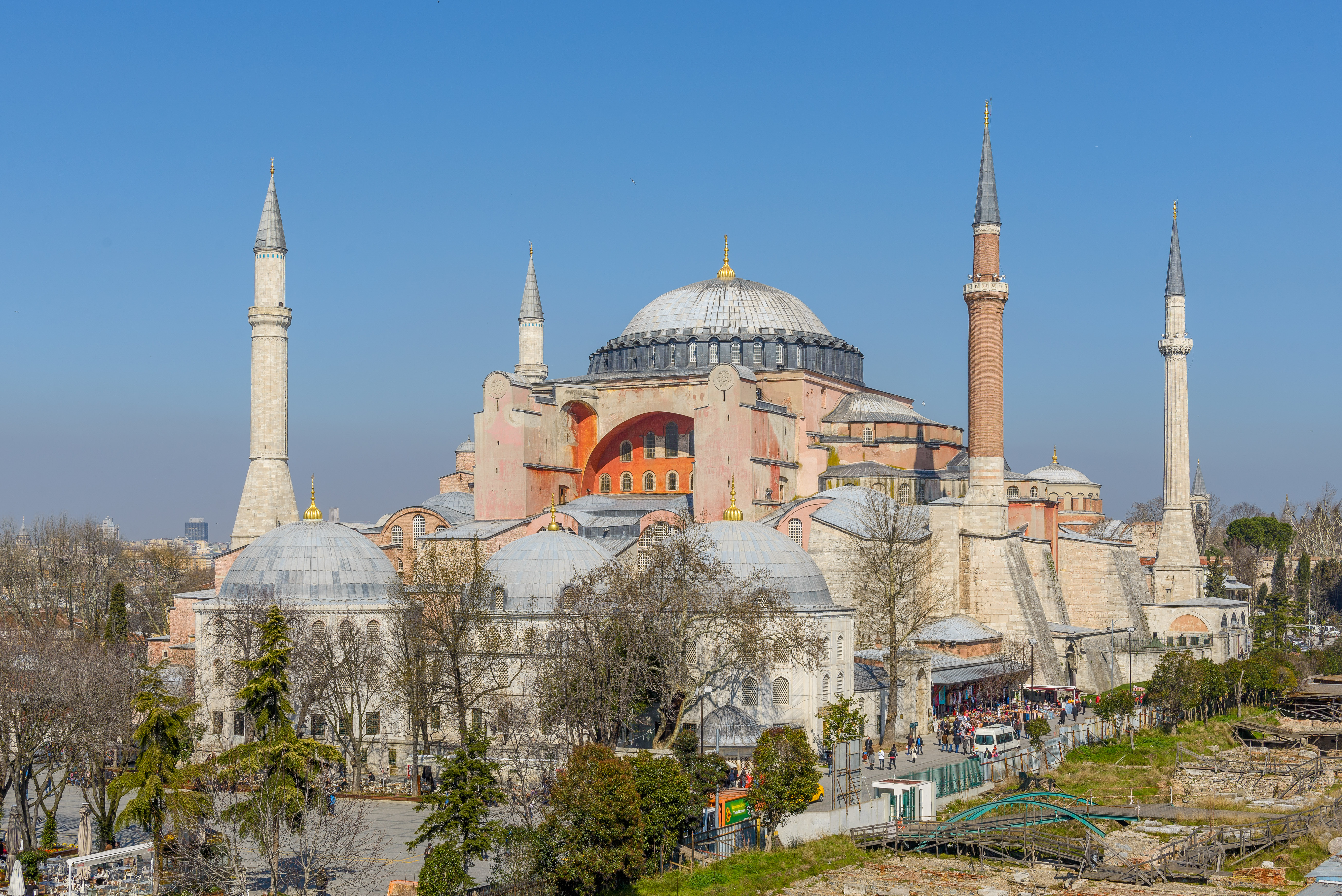

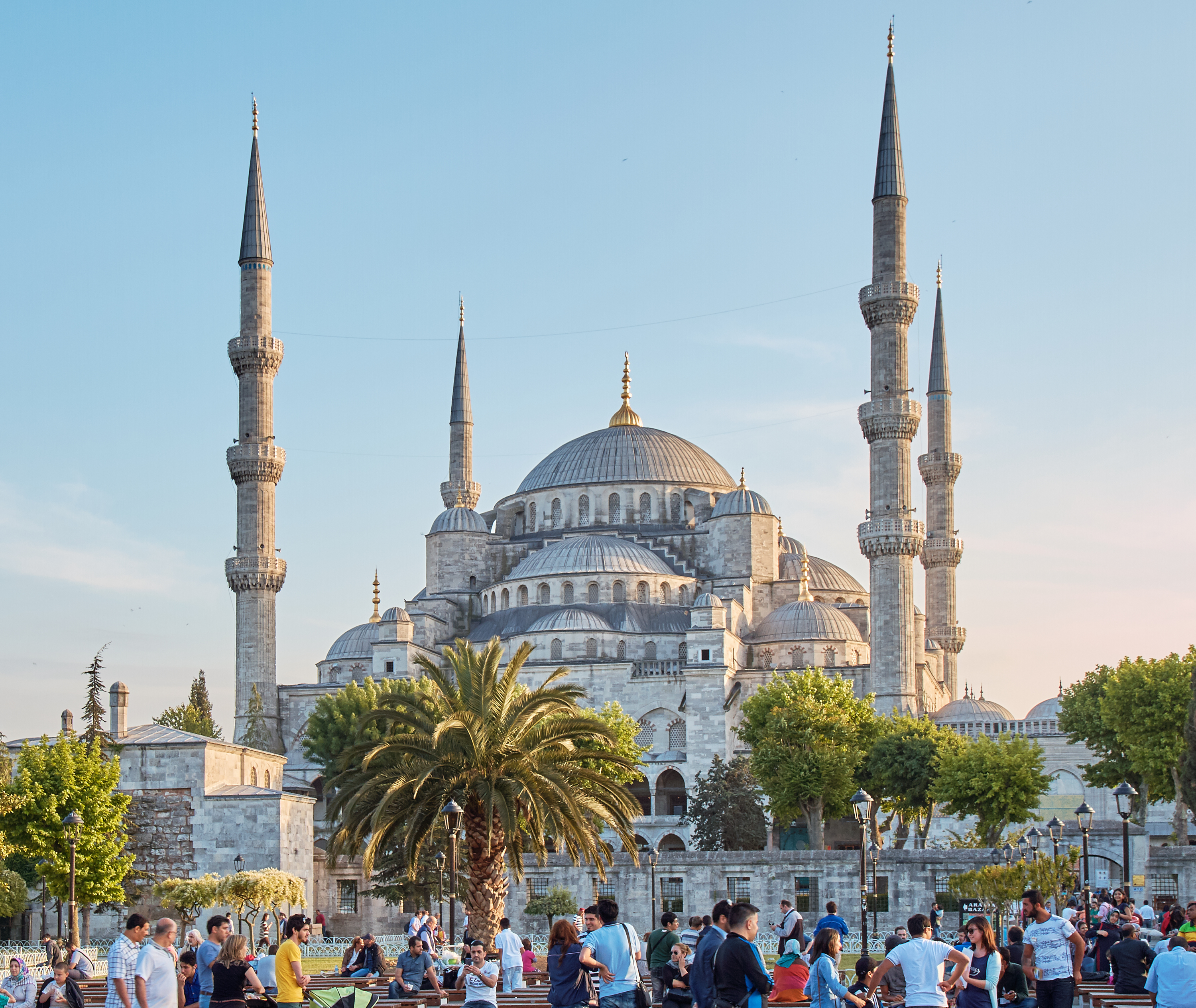
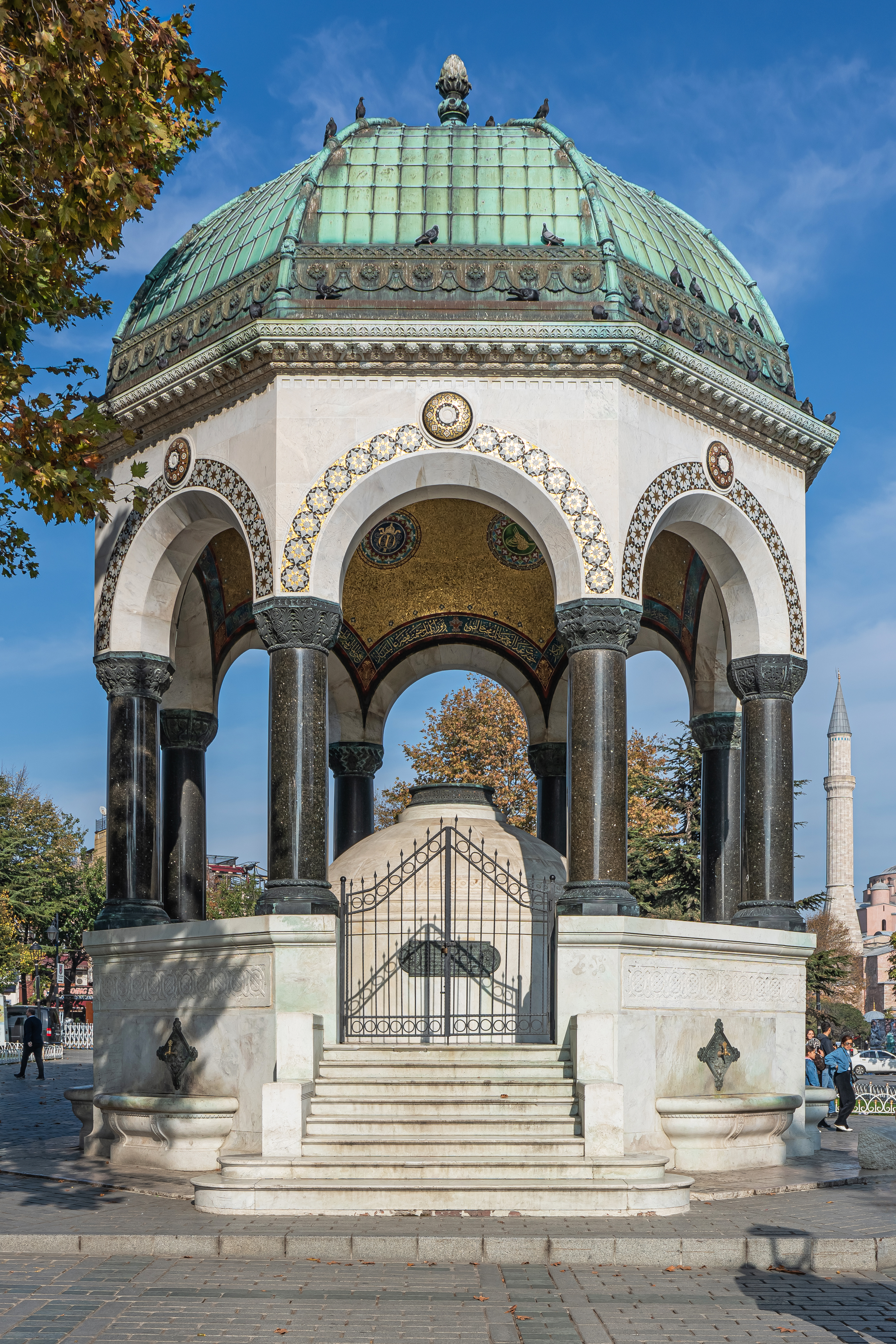 The name "Fatih" comes from the Ottoman emperor Fatih Sultan Mehmed (Mehmed the Conqueror or Mehmed II), and means "Conqueror" in Turkish, originally from
The name "Fatih" comes from the Ottoman emperor Fatih Sultan Mehmed (Mehmed the Conqueror or Mehmed II), and means "Conqueror" in Turkish, originally from 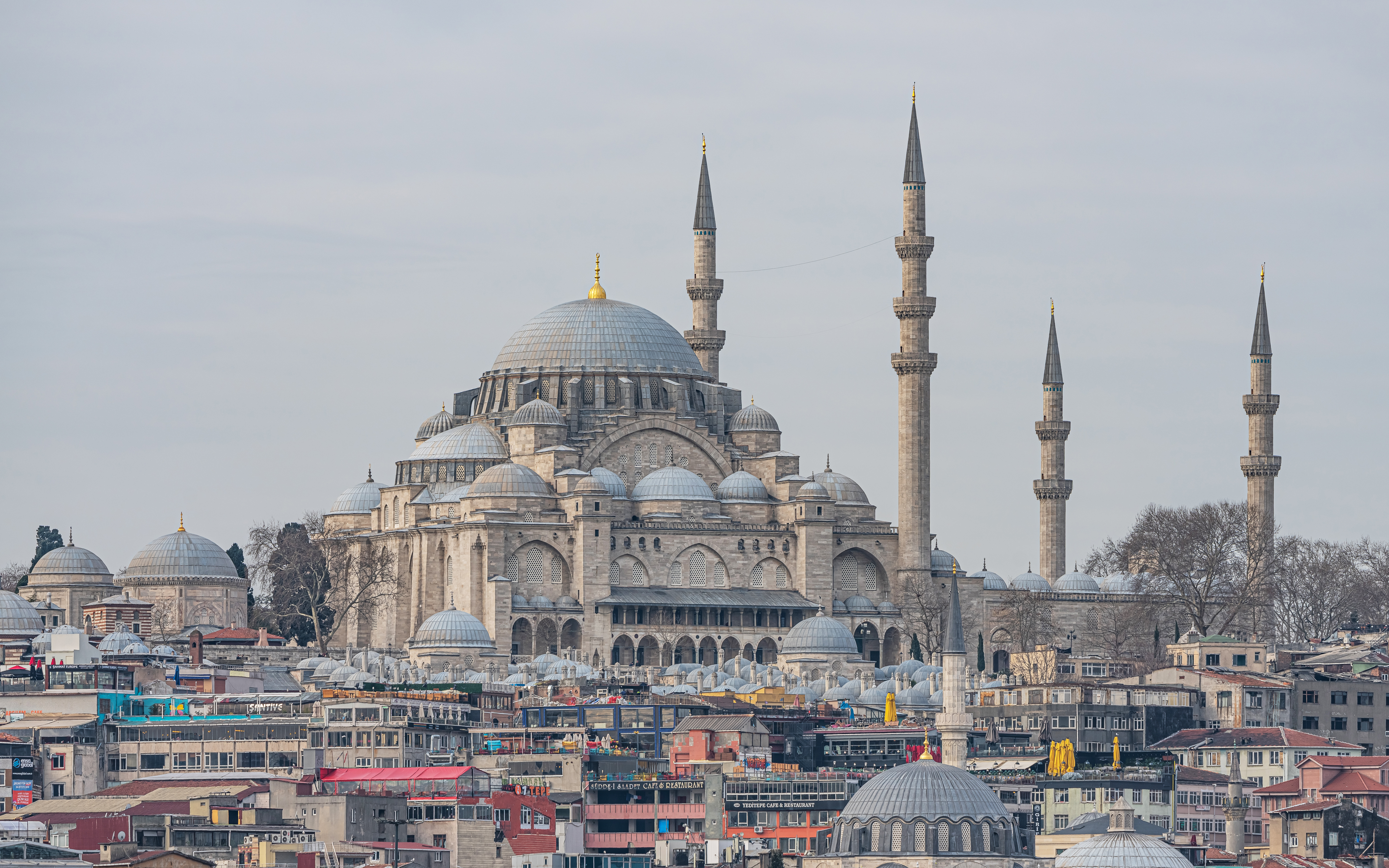 Immediately after the conquest, groups of Islamic scholars transformed the major churches of
Immediately after the conquest, groups of Islamic scholars transformed the major churches of  Following the conquest, the Edirnekapı (meaning '' Edirne Gate'') gate in the city walls became the major exit to
Following the conquest, the Edirnekapı (meaning '' Edirne Gate'') gate in the city walls became the major exit to
 At present, Fatih contains areas including
At present, Fatih contains areas including 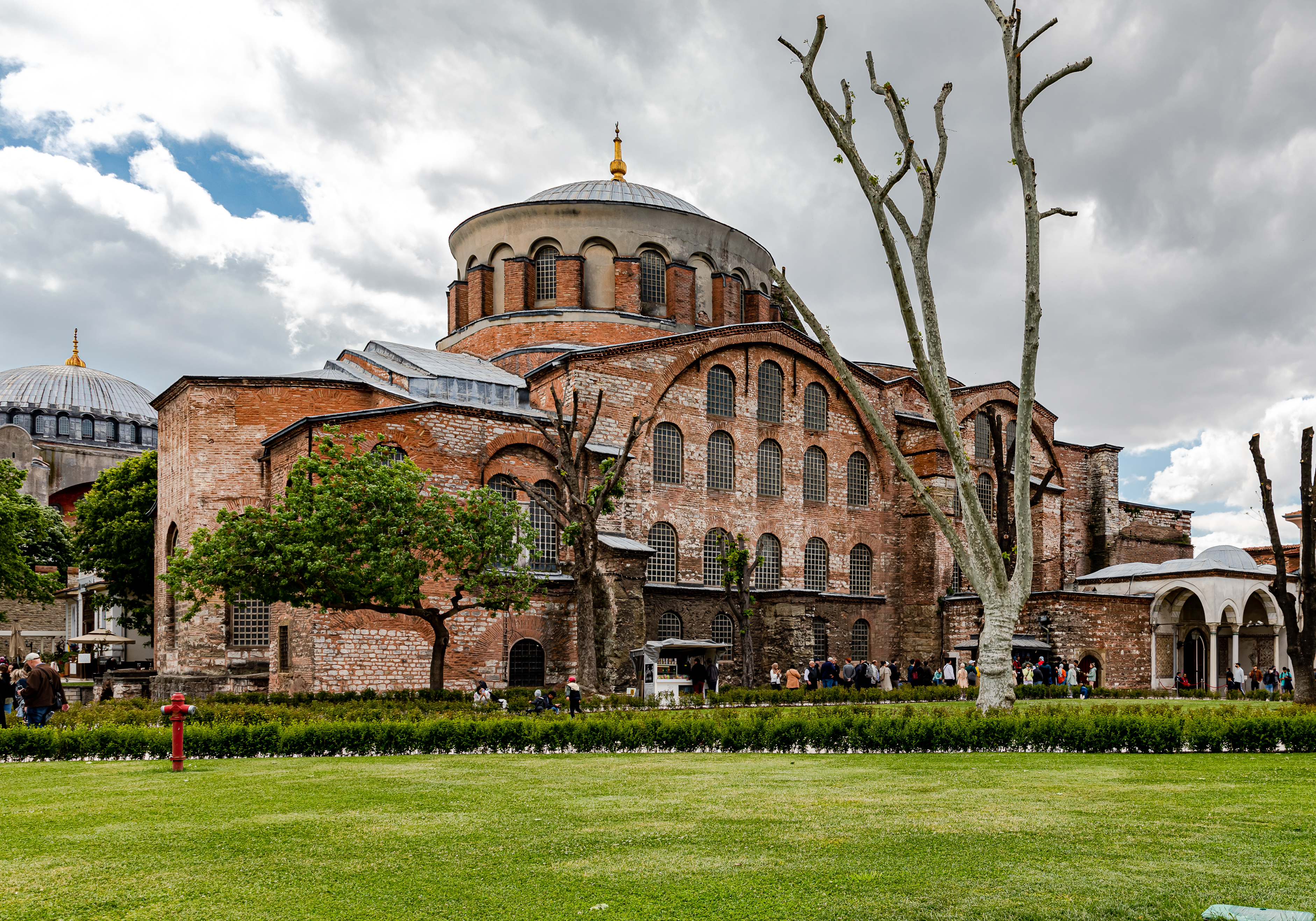 Fatih has many theatres, including the famous Reşat Nuri Sahnesi. The area is well-served with a number of schools, hospitals and public amenities in general. A number of Istanbul's longest-established hospitals are in Fatih, including the Istanbul University teaching hospitals of Çapa and Cerrahpaşa, the Haseki Public Hospital, the Samatya Public Hospital, and the Vakıf Gureba Public Hospital. A tramway runs from the docks at Sirkeci, through Sultanahmet, and finally to
Fatih has many theatres, including the famous Reşat Nuri Sahnesi. The area is well-served with a number of schools, hospitals and public amenities in general. A number of Istanbul's longest-established hospitals are in Fatih, including the Istanbul University teaching hospitals of Çapa and Cerrahpaşa, the Haseki Public Hospital, the Samatya Public Hospital, and the Vakıf Gureba Public Hospital. A tramway runs from the docks at Sirkeci, through Sultanahmet, and finally to 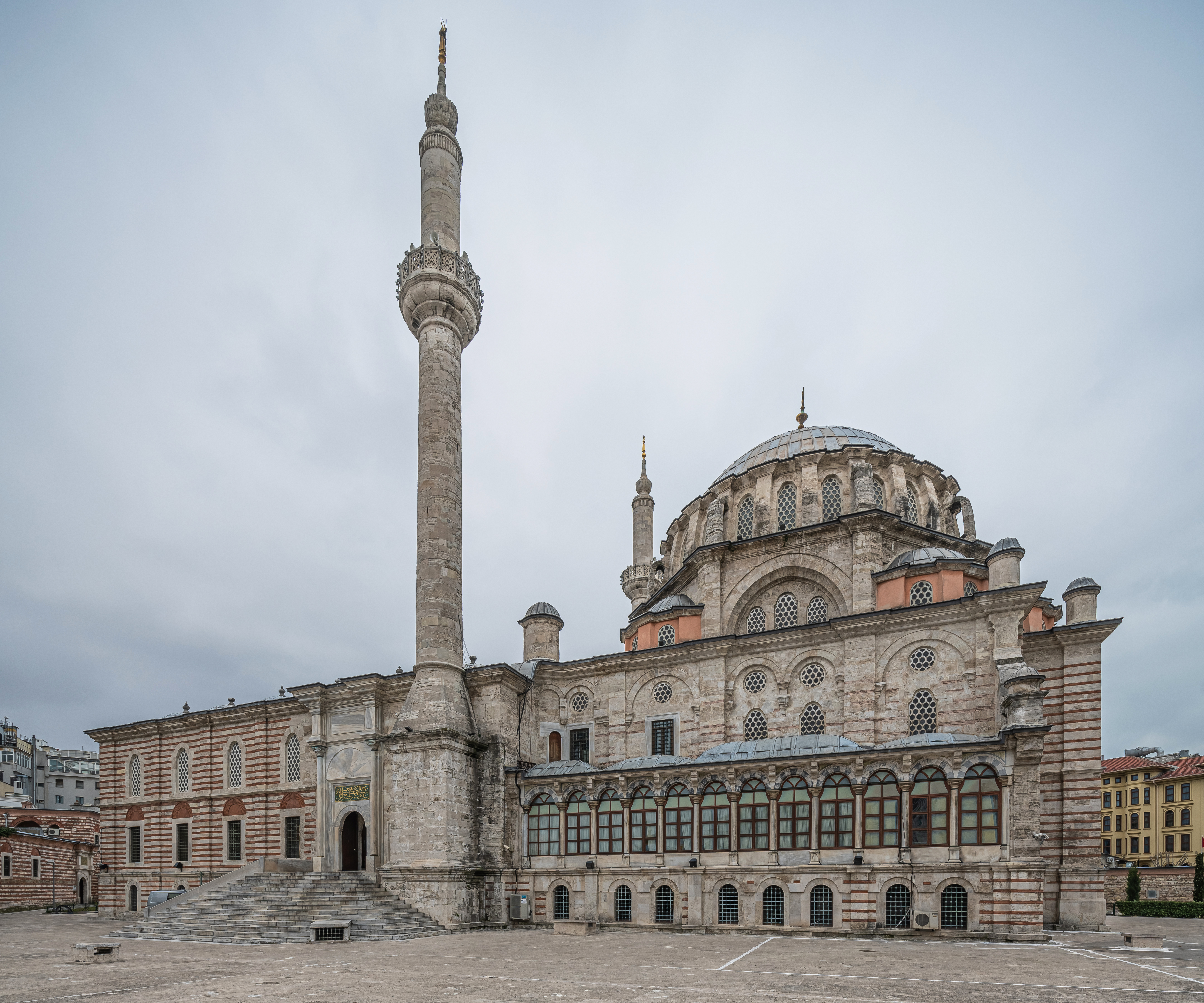 Also, besides the headquarters, some main units of the Istanbul Metropolitan Municipality, including the city's fire department, are based in Fatih.
Also, besides the headquarters, some main units of the Istanbul Metropolitan Municipality, including the city's fire department, are based in Fatih.
 Fatih has many historic and modern libraries, including the Edirnekapı Halk Kütüphanesi, Fener Rum Patrikhanesi Kütüphanesi (''the Library of the Patriarchate''), Hekimoğlu Ali Paşa Halk Kütüphanesi, İstanbul University Library, İstanbul University Cerrahpaşa Tıp Fakültesi Kütüphanesi, İstanbul Üniversitesi Kardiyoloji Ensitütüsü Kütüphanesi, İstanbul Üniversitesi Tıp Fakültesi Hulusi Behçet Kitaplığı, İstanbul Büyükşehir Belediyesi Kadın Eserleri Kütüphanesi,
Fatih has many historic and modern libraries, including the Edirnekapı Halk Kütüphanesi, Fener Rum Patrikhanesi Kütüphanesi (''the Library of the Patriarchate''), Hekimoğlu Ali Paşa Halk Kütüphanesi, İstanbul University Library, İstanbul University Cerrahpaşa Tıp Fakültesi Kütüphanesi, İstanbul Üniversitesi Kardiyoloji Ensitütüsü Kütüphanesi, İstanbul Üniversitesi Tıp Fakültesi Hulusi Behçet Kitaplığı, İstanbul Büyükşehir Belediyesi Kadın Eserleri Kütüphanesi, 
 On the other hand, today Fatih is known as one of the most conservative and peaceful religious areas of Istanbul because of the religious residents of the Çarşamba quarter which is essentially a very minor part of this historical district. Çarşamba is famous with bearded men in heavy coats, the traditional baggy ' shalwar' trousers and Islamic
On the other hand, today Fatih is known as one of the most conservative and peaceful religious areas of Istanbul because of the religious residents of the Çarşamba quarter which is essentially a very minor part of this historical district. Çarşamba is famous with bearded men in heavy coats, the traditional baggy ' shalwar' trousers and Islamic



 *
*
Fatih Municipality
{{Authority control Districts of Istanbul Province Populated places in Istanbul Province Populated places of the Byzantine Empire
district
A district is a type of administrative division that, in some countries, is managed by the local government. Across the world, areas known as "districts" vary greatly in size, spanning regions or counties, several municipalities, subdivision ...
of and a municipality
A municipality is usually a single administrative division having corporate status and powers of self-government or jurisdiction as granted by national and regional laws to which it is subordinate.
The term ''municipality'' may also mean the ...
(''belediye'') in Istanbul
)
, postal_code_type = Postal code
, postal_code = 34000 to 34990
, area_code = +90 212 (European side) +90 216 (Asian side)
, registration_plate = 34
, blank_name_sec2 = GeoTLD
, blank_i ...
, Turkey, and home to almost all of the provincial authorities (including the governor's office, police headquarters, metropolitan municipality and tax office) but not the courthouse. It encompasses the peninsula
A peninsula (; ) is a landform that extends from a mainland and is surrounded by water on most, but not all of its borders. A peninsula is also sometimes defined as a piece of land bordered by water on three of its sides. Peninsulas exist on a ...
coinciding with old Constantinople
la, Constantinopolis ota, قسطنطينيه
, alternate_name = Byzantion (earlier Greek name), Nova Roma ("New Rome"), Miklagard/Miklagarth (Old Norse), Tsargrad ( Slavic), Qustantiniya (Arabic), Basileuousa ("Queen of Cities"), Megalopolis (" ...
. In 2009, the district of Eminönü, which had been a separate municipality located at the tip of the peninsula, was once again remerged into Fatih because of its small population. Fatih is bordered by the Golden Horn to the north and the Sea of Marmara to the south, while the Western border is demarked by the Theodosian wall
A wall is a structure and a surface that defines an area; carries a load; provides security, shelter, or soundproofing; or, is decorative. There are many kinds of walls, including:
* Walls in buildings that form a fundamental part of the s ...
and the east by the Bosphorus Strait
The Bosporus Strait (; grc, Βόσπορος ; tr, İstanbul Boğazı 'Istanbul strait', colloquially ''Boğaz'') or Bosphorus Strait is a natural strait and an internationally significant waterway located in Istanbul in northwestern Tu ...
.

History
Byzantine era
 Historic Byzantine districts encompassed by present-day Fatih include: ''Exokiónion'', ''Aurelianae'', ''Xerólophos'', '' ta Eleuthérou'', ''Helenianae'', ''ta Dalmatoú'', ''Sígma'', '' Psamátheia'', ''ta Katakalón'', ''Paradeísion'', ''ta Olympíou'', ''ta Kýrou'', ''Peghé'', ''Rhéghion'', ''ta Elebíchou'', ''Leomákellon'', ''ta Dexiokrátous'', ''Petríon'' or ''Pétra'', '' Phanàrion'', ''Exi Mármara'' ( Altımermer), ''Philopátion'', ''Deúteron'' and '' Vlachernaí''.
Historic Byzantine districts encompassed by present-day Fatih include: ''Exokiónion'', ''Aurelianae'', ''Xerólophos'', '' ta Eleuthérou'', ''Helenianae'', ''ta Dalmatoú'', ''Sígma'', '' Psamátheia'', ''ta Katakalón'', ''Paradeísion'', ''ta Olympíou'', ''ta Kýrou'', ''Peghé'', ''Rhéghion'', ''ta Elebíchou'', ''Leomákellon'', ''ta Dexiokrátous'', ''Petríon'' or ''Pétra'', '' Phanàrion'', ''Exi Mármara'' ( Altımermer), ''Philopátion'', ''Deúteron'' and '' Vlachernaí''.


Ottoman period

 The name "Fatih" comes from the Ottoman emperor Fatih Sultan Mehmed (Mehmed the Conqueror or Mehmed II), and means "Conqueror" in Turkish, originally from
The name "Fatih" comes from the Ottoman emperor Fatih Sultan Mehmed (Mehmed the Conqueror or Mehmed II), and means "Conqueror" in Turkish, originally from Arabic
Arabic (, ' ; , ' or ) is a Semitic language spoken primarily across the Arab world.Semitic languages: an international handbook / edited by Stefan Weninger; in collaboration with Geoffrey Khan, Michael P. Streck, Janet C. E.Watson; Walter ...
. The Fatih Mosque built by Mehmed II is in this district, while his resting place is next to the mosque
A mosque (; from ar, مَسْجِد, masjid, ; literally "place of ritual prostration"), also called masjid, is a place of prayer for Muslims. Mosques are usually covered buildings, but can be any place where prayers ( sujud) are performed, ...
and is much visited. Fatih Mosque was built on the ruins of the Church of the Holy Apostles, destroyed by earthquakes and years of war. A large madrasa
Madrasa (, also , ; Arabic: مدرسة , pl. , ) is the Arabic word for any type of educational institution, secular or religious (of any religion), whether for elementary instruction or higher learning. The word is variously transliterated '' ...
complex was also built around the mosque..
 Immediately after the conquest, groups of Islamic scholars transformed the major churches of
Immediately after the conquest, groups of Islamic scholars transformed the major churches of Hagia Sophia
Hagia Sophia ( 'Holy Wisdom'; ; ; ), officially the Hagia Sophia Grand Mosque ( tr, Ayasofya-i Kebir Cami-i Şerifi), is a mosque and major cultural and historical site in Istanbul, Turkey. The cathedral was originally built as a Greek Ortho ...
and the Pantocrator (today the Zeyrek Mosque) into mosques, but the Fatih Mosque and its surrounding complex was the first purpose-built Islamic seminary within the city walls. The building of the mosque complex ensured that the area continued to thrive beyond the conquest; markets grew up to support the thousands of workers involved in the building and to supply them with materials, and then to service the students in the seminary. The area quickly became a Turkish neighbourhood with a particularly pious character due to the seminary. Some of this piety has endured until today.
 Following the conquest, the Edirnekapı (meaning '' Edirne Gate'') gate in the city walls became the major exit to
Following the conquest, the Edirnekapı (meaning '' Edirne Gate'') gate in the city walls became the major exit to Thrace
Thrace (; el, Θράκη, Thráki; bg, Тракия, Trakiya; tr, Trakya) or Thrake is a geographical and historical region in Southeast Europe, now split among Bulgaria, Greece, and Turkey, which is bounded by the Balkan Mountains to ...
, and this rejuvenated the neighbourhoods overlooking the Golden Horn. The Fatih Mosque was on the road to Edirnekapı and the Fatih district became the most populous area of the city in the early Ottoman period and in the 16th century more mosques and markets were built in this area, including: Iskender Pasha Mosque, once famous as a centre for the Naqshbandi
The Naqshbandi ( fa, نقشبندی)), Neqshebendi ( ku, نهقشهبهندی), and Nakşibendi (in Turkish) is a major Sunni order of Sufism. Its name is derived from Baha-ud-Din Naqshband Bukhari. Naqshbandi masters trace their ...
order in Turkey); Hirka-i-Sharif Mosque, which houses the cloak of the Prophet Muhammad
Muhammad ( ar, مُحَمَّد; 570 – 8 June 632 CE) was an Arab religious, social, and political leader and the founder of Islam. According to Islamic doctrine, he was a prophet divinely inspired to preach and confirm the mon ...
(The Mosque
A mosque (; from ar, مَسْجِد, masjid, ; literally "place of ritual prostration"), also called masjid, is a place of prayer for Muslims. Mosques are usually covered buildings, but can be any place where prayers ( sujud) are performed, ...
is in common use but the cloak is only on show during the month of Ramadan
, type = islam
, longtype = Religious
, image = Ramadan montage.jpg
, caption=From top, left to right: A crescent moon over Sarıçam, Turkey, marking the beginning of the Islamic month of Ramadan. Ramadan Quran reading in Bandar Torkaman, Iran. ...
; the Jerrahi Tekke; The Sunbul Efendi
Sunbul ( ar, اسنبل), alternatively spelled Asanbel, is a village in northern Aleppo Governorate, northwestern Syria. Located north of the city of Aleppo and east of Mare', it administratively belongs to Nahiya Mare' in A'zaz District
Az ...
Tekke and the Ramazan Efendi Tekke both in the Kocamustafapaşa district and the Vefa Kilise Mosque, originally a Byzantine church. The last four were named after the founders of various Sufi
Sufism ( ar, ''aṣ-ṣūfiyya''), also known as Tasawwuf ( ''at-taṣawwuf''), is a mystic body of religious practice, found mainly within Sunni Islam but also within Shia Islam, which is characterized by a focus on Islamic spirituality, r ...
orders, and Sheikh Ebü’l Vefa in particular was of major importance in the city and was very fond of Fatih. Many other mosques, schools, baths, and fountains in the area were built by military leaders and officials in the Ottoman court.
From the 18th century onwards, Istanbul started to grow outside the walls, and then began the transformation of Fatih into the heavily residential district, dominated by concrete apartment housing, that it remains today. This process was accelerated over the years by fires which destroyed whole neighbourhoods of wooden houses, and a major earthquake in 1766, which destroyed the Fatih Mosque and many of the surrounding buildings (subsequently rebuilt). Fires continued to ravage the old city, and the wide roads that run through the area today are a legacy of all that burning. There are few wooden buildings left in Fatih today, although right up until the 1960s, the area was covered with narrow streets of wooden buildings. Nowadays, the district is largely made up of narrow streets with tightly packed 5- or 6-floor apartment buildings.
The confectioner Hafiz Mustafa 1864 was founded in 1864 by Hadji İsmail Hakkı Beyat what is today Hamidiye street in the district during the reign of Sultan Abdulaziz
Abdulaziz ( ota, عبد العزيز, ʿAbdü'l-ʿAzîz; tr, Abdülaziz; 8 February 18304 June 1876) was the 32nd Sultan of the Ottoman Empire and reigned from 25 June 1861 to 30 May 1876, when he was overthrown in a government coup. He was a ...
.
Fatih today
 At present, Fatih contains areas including
At present, Fatih contains areas including Aksaray
Aksaray (, Koine Greek: Ἀρχελαΐς ''Arhelays'', Medieval Greek: Κολώνεια ''Koloneya'', Ancient Greek: Γαρσάουρα ''Garsaura'') is a city in the Central Anatolia region of Turkey and the capital of Aksaray Province. In ...
, Fındıkzade, Çapa, and Vatan Caddesi that are more cosmopolitan than the conservative image which the district has in the eyes of many people. With Eminönü, which was again officially a part of the Fatih district until 1928, and with its historical Byzantine
The Byzantine Empire, also referred to as the Eastern Roman Empire or Byzantium, was the continuation of the Roman Empire primarily in its eastern provinces during Late Antiquity and the Middle Ages, when its capital city was Constantinopl ...
walls, conquered by Mehmed II, Fatih is the "real" Istanbul of the old times, before the recent enlargement of the city that began in the 19th century.
The area has become more and more crowded from the 1960s onwards, and a large portion of the middle-class residents have moved to the Anatolia
Anatolia, tr, Anadolu Yarımadası), and the Anatolian plateau, also known as Asia Minor, is a large peninsula in Western Asia and the westernmost protrusion of the Asian continent. It constitutes the major part of modern-day Turkey. The re ...
n side and other parts of the city. Fatih today is largely a working-class district, but being a previously wealthy area, it is well-resourced, with a more thoroughly established community than the newly built areas such as Bağcılar or Esenler
Esenler is a district of Istanbul, Turkey, on its European side. Esenler is mainly densely packed, working class residential in the midst of its industrial neighbouring districts of Gaziosmanpaşa, Güngören and Bağcılar. The mayor is Tevfi ...
to the west, which are almost entirely inhabited by post-1980s migrants who came to the city in desperate circumstances. Fatih was built with some degree of central planning by the municipality.
Istanbul University
, image = Istanbul_University_logo.svg
, image_size = 200px
, latin_name = Universitas Istanbulensis
, motto = tr, Tarihten Geleceğe Bilim Köprüsü
, mottoeng = Science Bridge from Past to the Future
, established = 1453 1846 1933
...
which was founded in 1453 is in Fatih. In addition, since 1586, the Orthodox Christian Patriarchate of Constantinople has had its headquarters in the relatively modest Church of St. George in the Fener neighborhood of Fatih.
 Fatih has many theatres, including the famous Reşat Nuri Sahnesi. The area is well-served with a number of schools, hospitals and public amenities in general. A number of Istanbul's longest-established hospitals are in Fatih, including the Istanbul University teaching hospitals of Çapa and Cerrahpaşa, the Haseki Public Hospital, the Samatya Public Hospital, and the Vakıf Gureba Public Hospital. A tramway runs from the docks at Sirkeci, through Sultanahmet, and finally to
Fatih has many theatres, including the famous Reşat Nuri Sahnesi. The area is well-served with a number of schools, hospitals and public amenities in general. A number of Istanbul's longest-established hospitals are in Fatih, including the Istanbul University teaching hospitals of Çapa and Cerrahpaşa, the Haseki Public Hospital, the Samatya Public Hospital, and the Vakıf Gureba Public Hospital. A tramway runs from the docks at Sirkeci, through Sultanahmet, and finally to Aksaray
Aksaray (, Koine Greek: Ἀρχελαΐς ''Arhelays'', Medieval Greek: Κολώνεια ''Koloneya'', Ancient Greek: Γαρσάουρα ''Garsaura'') is a city in the Central Anatolia region of Turkey and the capital of Aksaray Province. In ...
, which is a part of Fatih.
 Also, besides the headquarters, some main units of the Istanbul Metropolitan Municipality, including the city's fire department, are based in Fatih.
Also, besides the headquarters, some main units of the Istanbul Metropolitan Municipality, including the city's fire department, are based in Fatih.
 Fatih has many historic and modern libraries, including the Edirnekapı Halk Kütüphanesi, Fener Rum Patrikhanesi Kütüphanesi (''the Library of the Patriarchate''), Hekimoğlu Ali Paşa Halk Kütüphanesi, İstanbul University Library, İstanbul University Cerrahpaşa Tıp Fakültesi Kütüphanesi, İstanbul Üniversitesi Kardiyoloji Ensitütüsü Kütüphanesi, İstanbul Üniversitesi Tıp Fakültesi Hulusi Behçet Kitaplığı, İstanbul Büyükşehir Belediyesi Kadın Eserleri Kütüphanesi,
Fatih has many historic and modern libraries, including the Edirnekapı Halk Kütüphanesi, Fener Rum Patrikhanesi Kütüphanesi (''the Library of the Patriarchate''), Hekimoğlu Ali Paşa Halk Kütüphanesi, İstanbul University Library, İstanbul University Cerrahpaşa Tıp Fakültesi Kütüphanesi, İstanbul Üniversitesi Kardiyoloji Ensitütüsü Kütüphanesi, İstanbul Üniversitesi Tıp Fakültesi Hulusi Behçet Kitaplığı, İstanbul Büyükşehir Belediyesi Kadın Eserleri Kütüphanesi, Millet Kütüphanesi
Millets () are a highly varied group of small-seeded grasses, widely grown around the world as cereal crops or grains for fodder and human food. Most species generally referred to as millets belong to the tribe Paniceae, but some millets also ...
, Mizah Kütüphanesi, Murat Molla Halk Kütüphanesi, Ragıppaşa Kütüphanesi, and Yusufpaşa Halk Kütüphanesi.

 On the other hand, today Fatih is known as one of the most conservative and peaceful religious areas of Istanbul because of the religious residents of the Çarşamba quarter which is essentially a very minor part of this historical district. Çarşamba is famous with bearded men in heavy coats, the traditional baggy ' shalwar' trousers and Islamic
On the other hand, today Fatih is known as one of the most conservative and peaceful religious areas of Istanbul because of the religious residents of the Çarşamba quarter which is essentially a very minor part of this historical district. Çarşamba is famous with bearded men in heavy coats, the traditional baggy ' shalwar' trousers and Islamic turban
A turban (from Persian دولبند, ''dulband''; via Middle French ''turbant'') is a type of headwear based on cloth winding. Featuring many variations, it is worn as customary headwear by people of various cultures. Communities with promin ...
; while women dressed in full black gowns are a common sight as this area is popular with members of a Naqshbandi
The Naqshbandi ( fa, نقشبندی)), Neqshebendi ( ku, نهقشهبهندی), and Nakşibendi (in Turkish) is a major Sunni order of Sufism. Its name is derived from Baha-ud-Din Naqshband Bukhari. Naqshbandi masters trace their ...
Sufi
Sufism ( ar, ''aṣ-ṣūfiyya''), also known as Tasawwuf ( ''at-taṣawwuf''), is a mystic body of religious practice, found mainly within Sunni Islam but also within Shia Islam, which is characterized by a focus on Islamic spirituality, r ...
order affiliated to Sheikh
Sheikh (pronounced or ; ar, شيخ ' , mostly pronounced , plural ' )—also transliterated sheekh, sheyikh, shaykh, shayk, shekh, shaik and Shaikh, shak—is an honorific title in the Arabic language. It commonly designates a chief of a ...
Mahmut Ustaosmanoğlu. Conservative political parties always do well in this area.
Küçükçekmece
Küçükçekmece (; meaning “small-drawer”, from much earlier ''Rhagion'' and ''Küçükçökmece as “little breakdown''" or “''little depression''”, in more ancient times just as Bathonea), is a suburb and district of Istanbul, Turke ...
, Başakşehir, Bağcılar, Gaziosmanpaşa, Esenler
Esenler is a district of Istanbul, Turkey, on its European side. Esenler is mainly densely packed, working class residential in the midst of its industrial neighbouring districts of Gaziosmanpaşa, Güngören and Bağcılar. The mayor is Tevfi ...
, Bayrampaşa
Bayrampaşa (pronounced ) is a suburban district of Istanbul, Turkey on the European side of the city.
The mayor is Atila Aydıner (AK Party).
History
Up to 1936, Bayrampaşa was part of Fatih district. It was then part of Eyüp district betwe ...
, Zeytinburnu, and Fatih are home to asylum seekers of Syrian origin.Climate
Fatih experiences aMediterranean climate
A Mediterranean climate (also called a dry summer temperate climate ''Cs'') is a temperate climate sub-type, generally characterized by warm, dry summers and mild, fairly wet winters; these weather conditions are typically experienced in the ...
(''Csa/Cs'') according to both Köppen and Trewartha
Trewartha and Andrewartha are Cornish family names (and placename, Dexter). There are places called Trewartha in the parishes of Merther, St Agnes, St Neot and Veryan.
According to the ''Handbook of Cornish Names'' by G. Pawley White, "Tre ...
climate classifications, with cool winters and warm to hot summers. It is in USDA hardiness zone 9a and AHS heat zone 4.
Neighborhoods
There are 57 neighbourhoods in Fatih as of 2017.Historical sites



 *
*Topkapı Palace
The Topkapı Palace ( tr, Topkapı Sarayı; ota, طوپقپو سرايى, ṭopḳapu sarāyı, lit=cannon gate palace), or the Seraglio, is a large museum in the east of the Fatih district of Istanbul in Turkey. From the 1460s to the compl ...
- historical residence of the Ottoman sultans
*Hagia Sophia
Hagia Sophia ( 'Holy Wisdom'; ; ; ), officially the Hagia Sophia Grand Mosque ( tr, Ayasofya-i Kebir Cami-i Şerifi), is a mosque and major cultural and historical site in Istanbul, Turkey. The cathedral was originally built as a Greek Ortho ...
- historical patriarchal cathedral of the Eastern Orthodox Church
The Eastern Orthodox Church, also called the Orthodox Church, is the second-largest Christian church, with approximately 220 million baptized members. It operates as a communion of autocephalous churches, each governed by its bishops via ...
in the Byzantine Empire
The Byzantine Empire, also referred to as the Eastern Roman Empire or Byzantium, was the continuation of the Roman Empire primarily in its eastern provinces during Late Antiquity and the Middle Ages, when its capital city was Constantinopl ...
's capital city, later converted into a mosque, then a museum, then a mosque again.
* Süleymaniye – the huge mosque complex of Suleiman the Magnificent;
* Turkish and Islamic Arts Museum – formerly the palace of Pargalı Ibrahim Pasha one of the grand viziers and husband of the Sultan's sister, Hatice Sultan
* Yeni Mosque (The new mosque) – the mosque that dominates the waterfront by the Galata Bridge; there is a wide open space in front where people feed the pigeons.
* Grand Bazaar – as much to look at as to shop in.
*Spice Bazaar
The Spice Bazaar ( tr, Mısır Çarşısı, meaning "Egyptian Bazaar") in Istanbul, Turkey is one of the largest bazaars in the city. Located in the Eminönü quarter of the Fatih district, it is the most famous covered shopping complex after th ...
– another Ottoman caravanserai, not as huge as the Grand Bazaar but right on the water, next to the Yeni Mosque;
* Sokollu Mehmet Pasha Mosque – in Kadirga District (the Byzantine Sophianòn Limin in Greek).Demographics
Media
The offices of the magazine '' Servet-i Fünun'' were in "Stamboul" (what is now Fatih district) during the magazine's existence.Visitor attractions
Today, there are still remnants of the sea walls along the Golden Horn and along the Marmara shore, to give a sense of the shape of the oldwalled city
A defensive wall is a fortification usually used to protect a city, town or other settlement from potential aggressors. The walls can range from simple palisades or earthworks to extensive military fortifications with towers, bastions and gates ...
. There are also a number of important architectural structures in the Fatih district, including the Valens Aqueduct across the Atatürk Bulvarı, the fortress on the city walls at Yedikule
Yedikule ( en, Seven Towers) is a neighborhood of Fatih, Istanbul in Turkey. It is named after the seven-towered Yedikule Fortress, which surrounds the neighborhood. Urbanized in the 16th century, the neighborhood became a hub for industrial and ...
, the Byzantine Palace of the Porphyrogenitus, the Roman column of Marcian, the Fethiye Cami (the former Byzantine church of Christ Pammakaristos), the Kariye Camii (the former Byzantine church of the Chora), Gül Camii (another former Byzantine church), Fenari Isa Camisi (a complex of two Byzantine churches), the Greek Patriarchate with the Church of St. George in the Fener district, the Church of St. Stephen ( "The Iron Church"), the Yavuz Selim Camii, the House-Museum of Dimitrie Cantemir, and the Fatih Mosque itself.
The tombs of some of the famous Ottoman sultan
The sultans of the Ottoman Empire ( tr, Osmanlı padişahları), who were all members of the Ottoman dynasty (House of Osman), ruled over the transcontinental empire from its perceived inception in 1299 to its dissolution in 1922. At its hei ...
s are in Fatih. These include Mehmed II
Mehmed II ( ota, محمد ثانى, translit=Meḥmed-i s̱ānī; tr, II. Mehmed, ; 30 March 14323 May 1481), commonly known as Mehmed the Conqueror ( ota, ابو الفتح, Ebū'l-fetḥ, lit=the Father of Conquest, links=no; tr, Fâtih Su ...
'the Conqueror' (Fatih Sultan Mehmed), Selim I
Selim I ( ota, سليم الأول; tr, I. Selim; 10 October 1470 – 22 September 1520), known as Selim the Grim or Selim the Resolute ( tr, links=no, Yavuz Sultan Selim), was the Sultan of the Ottoman Empire from 1512 to 1520. Despite las ...
(Yavuz Sultan Selim), Suleyman the Magnificent, and Abdul Hamid Khan Abdul Hamid Khan may refer to:
*Maulana Abdul Hamid Khan Bhashani (1880–1976), nicknamed Red Maulana, leader of his own faction of National Awami Party
*Abdul Hamid Khan Dasti, former Chief Minister of Punjab, Pakistan
* Abdul Hamid Khan (badmint ...
, as well as other leading statesmen of the Ottoman Empire
The Ottoman Empire, * ; is an archaic version. The definite article forms and were synonymous * and el, Оθωμανική Αυτοκρατορία, Othōmanikē Avtokratoria, label=none * info page on book at Martin Luther University ...
, including Gazi Osman Pasha
Osman Nuri Pasha ( ota, عثمان نوری پاشا; 1832, Tokat, Ottoman Empire – 4 to 5 April 1900, Constantinople, Ottoman Empire), also known as Ghazi Osman Pasha ( tr, Gazi Osman Paşa), was an Ottoman field marshal. Being o ...
. Fatih also has a collection of various cuisines (Syrian, Korean, Indian).International relations
Fatih is twinned with: *Wiesbaden
Wiesbaden () is a city in central western Germany and the capital of the state of Hesse. , it had 290,955 inhabitants, plus approximately 21,000 United States citizens (mostly associated with the United States Army). The Wiesbaden urban area ...
, Hesse
Hesse (, , ) or Hessia (, ; german: Hessen ), officially the State of Hessen (german: links=no, Land Hessen), is a state in Germany. Its capital city is Wiesbaden, and the largest urban area is Frankfurt. Two other major historic cities are ...
, GermanyMuncipality Mayors of Fatih
* 1984-1989 Yetkin Gündüz ANAP * 1989-1994 Yusuf Günaydın SHP * 1994-1999 Sadettin Tantan ANAP * 1999-2001 Eşref Albayrak FP * 2004-2018 Mustafa DemirAK Party
The Justice and Development Party ( tr, Adalet ve Kalkınma Partisi, ; AKP), abbreviated officially AK Party in English, is a political party in Turkey self-describing as conservative-democrat. It is one of the two major parties of contemporar ...
* 2018-2019 Hasan Suver AK Party
The Justice and Development Party ( tr, Adalet ve Kalkınma Partisi, ; AKP), abbreviated officially AK Party in English, is a political party in Turkey self-describing as conservative-democrat. It is one of the two major parties of contemporar ...
* 2019-current Mehmet Ergün Turan AK Party
The Justice and Development Party ( tr, Adalet ve Kalkınma Partisi, ; AKP), abbreviated officially AK Party in English, is a political party in Turkey self-describing as conservative-democrat. It is one of the two major parties of contemporar ...
See also
*Üsküdar
Üsküdar () is a large and densely populated district of Istanbul, Turkey, on the Anatolian shore of the Bosphorus. It is bordered to the north by Beykoz, to the east by Ümraniye, to the southeast by Ataşehir and to the south by Kadıköy; ...
References
External links
*Fatih Municipality
{{Authority control Districts of Istanbul Province Populated places in Istanbul Province Populated places of the Byzantine Empire